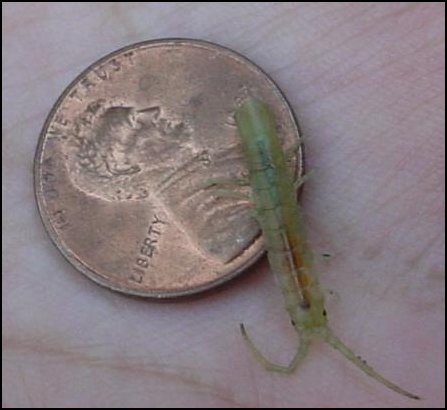Idotea (Idotea) fewkesi |
|
| Synonyms: |  |
| Phylum Arthropoda
Subphylum Crustacea Class Malacostraca Subclass Eumalacostraca Superorder Peracarida Order Isopoda Suborder Valvifera Family Idoteidae |
|
| Top view of an Idotea (Idotea) fewkesi found on Beach 4. | |
| (Photo by: Dave Cowles, July 2002) | |
How to Distinguish from Similar Species: They have a telson similar to Idotea stenops and the Idotea schmitti. However, I. fewkesi are far more narrow and elongated.
Geographical Range: Alaska to central California
Depth Range: Commonly found in the subtidal zone (8-12 meters) although a few may be found in the intertidal zone.
Habitat: Live on algae on exposed rocky coasts or subtidally.
Biology/Natural
History: Females appear
to be ovigerous
in July and October. Not much can be said about these
subtidal isopods.
Their pigmentation may be affected by the substrate on which they live.
| Return to: | |||
| Main Page | Alphabetic Index | Systematic Index | Glossary |
References:
Dichotomous Keys:
Kozloff, 1987
General References:
Morris,
Abbott, and Haderlie, 1980
Scientific Articles:
General Notes and Observations: Locations, abundances, unusual behaviors, etc.:
Authors and Editors of Page:
Created original page: Heidee Leno (2002)
Edited by: Hans Helmstetler 11-2002